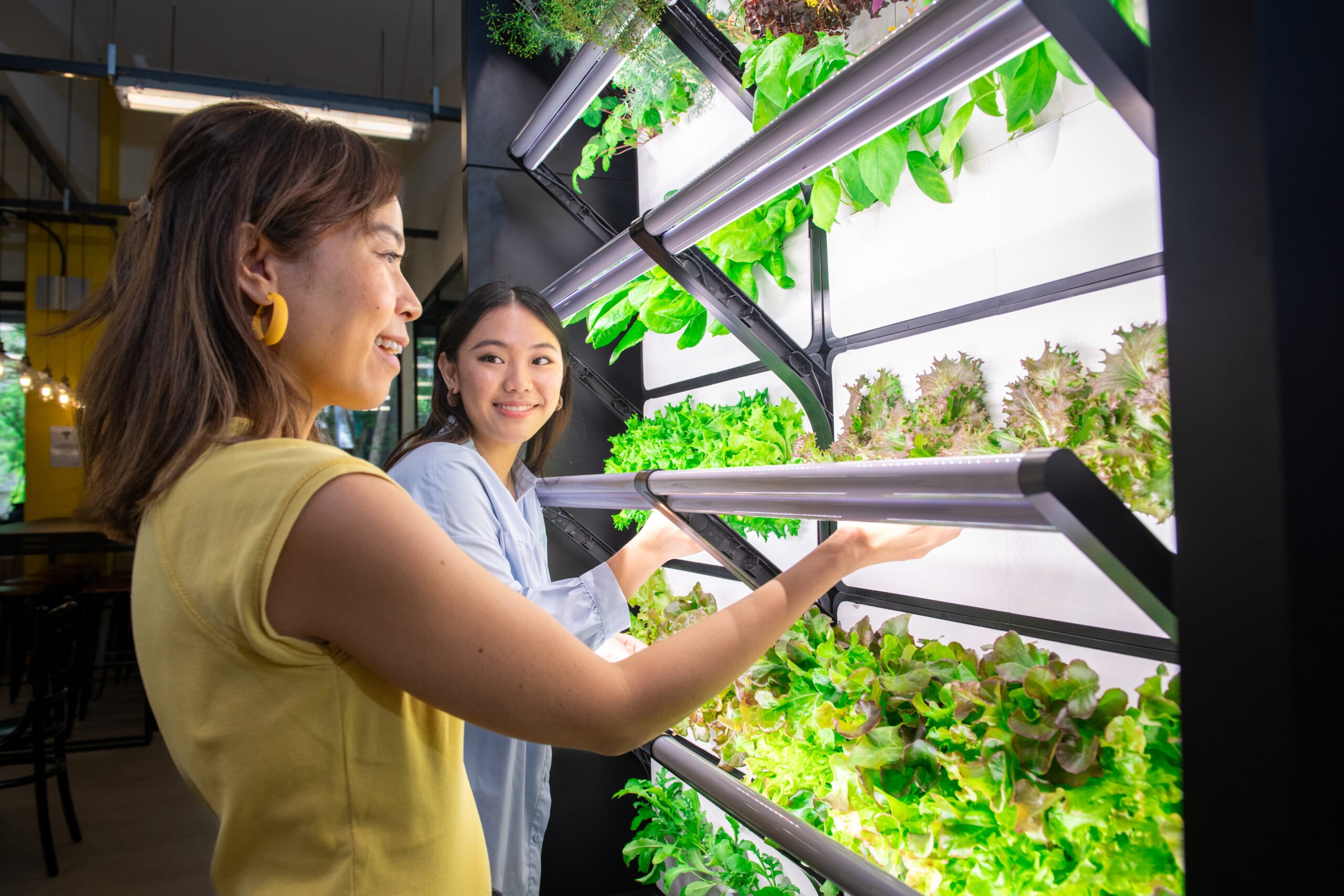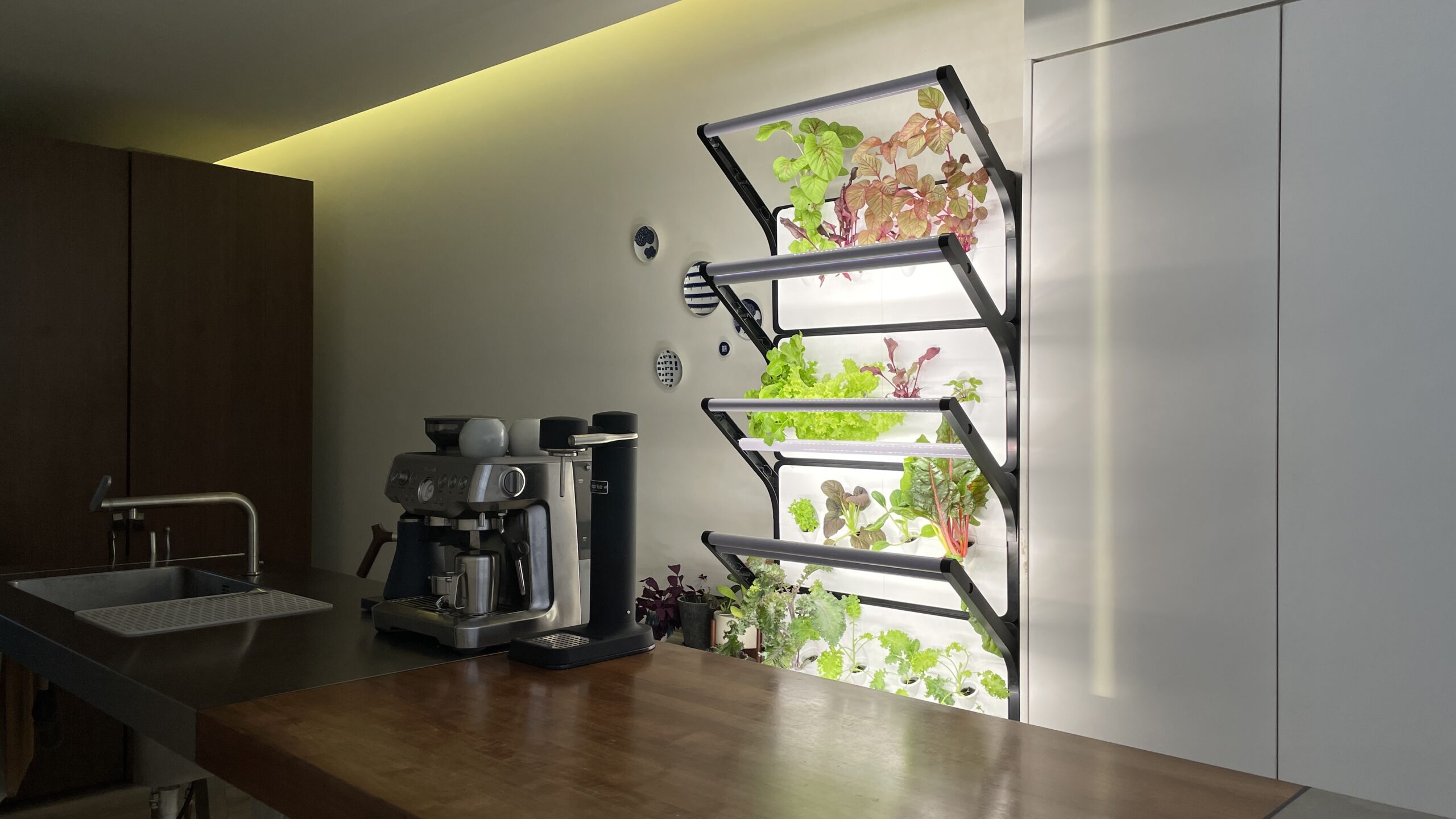- back to resources
- What is Urban Farming?
- back to resources
- ABOUT URBAN FARMING
- What is Urban Farming?
What is Urban Farming?
- ,
-
Grobrix

Compared to traditional farming, urban farming differs in several key ways:
- Location: Traditional farming occurs in rural areas with expansive fields, while urban farming takes place in densely populated cities, leveraging spaces like rooftops, walls, or plant walls in offices and homes.
- Space Utilization: Traditional methods rely on vast horizontal land, whereas urban farming maximizes limited urban spaces through techniques like vertical farming, stacking crops to optimize production in compact areas.
- Farming Techniques: Urban farming often employs advanced methods such as hydroponics, LED lighting, and Controlled Environment Agriculture (CEA).
As Mathew, founder of Grobrix, explains, “At Grobrix, we believe urban farming should be enjoyed by all as a lifestyle endeavour to nourish the body, nurture the mind and uplift the soul.” By integrating urban farms into communities, Grobrix promotes a closer connection to food sources, aligning with its mission to encourage sustainable, self-sufficient, and healthier lifestyles.
The History of Urban Farming
Urban farming has evolved alongside human societies for thousands of years. Ancient civilizations, such as the Mesopotamians, Romans, and Chinese, cultivated vegetables and medicinal plants within city walls, incorporating gardens into urban planning. During the 18th and 19th centuries, rapid urbanization in Europe led to the creation of family allotments, allowing lower-income urban families to grow food on rented city plots. The rise of industrialized agriculture during World War II reduced urban farming’s prominence in the West, but a resurgence began in the 1970s, driven by growing urban populations and diminishing agricultural land, which increased demand for alternative farming solutions.
Today, cities like Singapore, New York, and Paris are at the forefront of the modern urban farming movement. Projects such as Singapore’s Funan Mall Urban Farm, Paris’ Rooftop Farm, and New York’s Brooklyn Grange Farm demonstrate the potential of large-scale indoor farming and vertical gardening. These initiatives show how urban farming can transform urban spaces into productive, sustainable hubs. Grobrix contributes to this legacy by installing edible green walls that enable communities to grow fresh produce, as Mathew notes, “We started a movement to seed change and now build farming communities all over Singapore, Kuala Lumpur and now in the US!”
Types of Urban Farming
Urban farming adapts to the diverse spaces available in cities, offering flexible methods for both indoor and outdoor cultivation. From small balcony gardens to advanced plant walls in corporate offices, these setups cater to varying needs and environments, supporting sustainability initiatives and community well-being.
Common types of urban farming include:

- Vertical Farming (or Indoor Farming): This method grows crops on stacked vertical gardens, optimizing space in urban settings. Using LED lighting and environmental controls, vertical farming enables year-round production of leafy greens and herbs. Grobrix’s patented edible green walls exemplify this approach, allowing offices and homes to produce fresh farm-to-table produce with minimal space. “We bring the farm and the farmer’s market to you,” says Mathew, highlighting the accessibility of Grobrix’s model.

- Rooftop Gardens: These utilize unused rooftop spaces to grow produce, improving air quality, reducing building heat, and enhancing stormwater management. They provide a practical way to integrate urban farming into city infrastructure.

- Urban Community Gardens: Shared plots cultivated by communities offer affordable access to fresh produce and strengthen social bonds. These gardens promote collective participation and sustainable practices in urban settings.

- Urban Beekeeping: Beyond plants, urban farming includes maintaining bee colonies in urban environments like rooftops or gardens. Bees support pollination, enhancing the productivity of urban farms.
Urban Farming Technologies
Technological advancements have transformed urban farming, enabling efficient food production in resource-constrained urban environments. These innovations reduce reliance on traditional resources like soil and sunlight, making indoor farming and vertical farming viable solutions for cities.
Key urban farming technologies include:
- Hydroponics: Hydroponics is an alternative to traditional soil-based farming, and involves growing produce in nutrient-rich water solutions instead of dirt. These solutions can contain elements like nitrogen, phosphorus, and potassium. Plants grown using this technology typically grow faster, and require less water to grow when compared to traditionally farmed crops.
- Aquaponics: Another soil-less urban farming technology that combines hydroponics with aquaculture technology used to farm fish. By growing both plants and fish in the same facility, aquaponics uses the waste produced by the farmed fish to then fertilise growing plant produce using a recirculating water system
- LED Technology: LED or Light-Emitting Diodes provide artificial lighting for controlled agriculture systems like vertical farms and greenhouses. LED lighting comes in a wide range of colours, and works by mimicking sunlight. Lighting strength can be adjusted to emit exactly the correct wavelength for photosynthesis. They can even allow farmers to adjust the look, taste, and nutritional value of the food they are producing. Consistent temperatures, year-round lighting, and low energy consumption make LED lighting an essential part of urban farming technology.

These technologies enable urban farming to address modern challenges, as Mathew highlights: “By using these techniques, food can be grown closer to where it is consumed and is largely pesticide-free, offering higher nutrient density than produce transported in from afar.”
By incorporating these innovations into its community based vertical edible gardens, Grobrix is able to add further value by creating community and reconnecting people with the source of their food.
The Future of Urban Farming
As environmental pressures intensify, urban farming emerges as a vital strategy for sustainable food production. While it complements rather than replaces traditional agriculture, urban farming offers resilience, sustainability, and community connection. Government support, such as Singapore’s 30 by 30 initiative, which aims to produce 30% of the nation’s nutritional needs locally by 2030, underscores the importance of urban farming in enhancing food security.
In conclusion, urban farming transforms cities into vibrant, productive ecosystems. Through innovative technologies and community-focused solutions like Grobrix’s edible green walls, it empowers individuals and organizations to embrace sustainability initiatives and experience the benefits of farm-to-table living. As Mathew passionately shares, “Grobrix exists to rekindle the connection between people, their food, and our world,” paving the way for a greener, healthier future.
recent articles
At our partner office in Boston with Green City Growers, a few of us stepped outside to have lunch
- ,
An update from the farms…here’s what’s been growing in September at Grobrix! We welcome Teresa Pena as our in-house
- ,
My Story We all need to eat. Often, we eat meals together. Sometimes we prepare them together. In a
- ,






